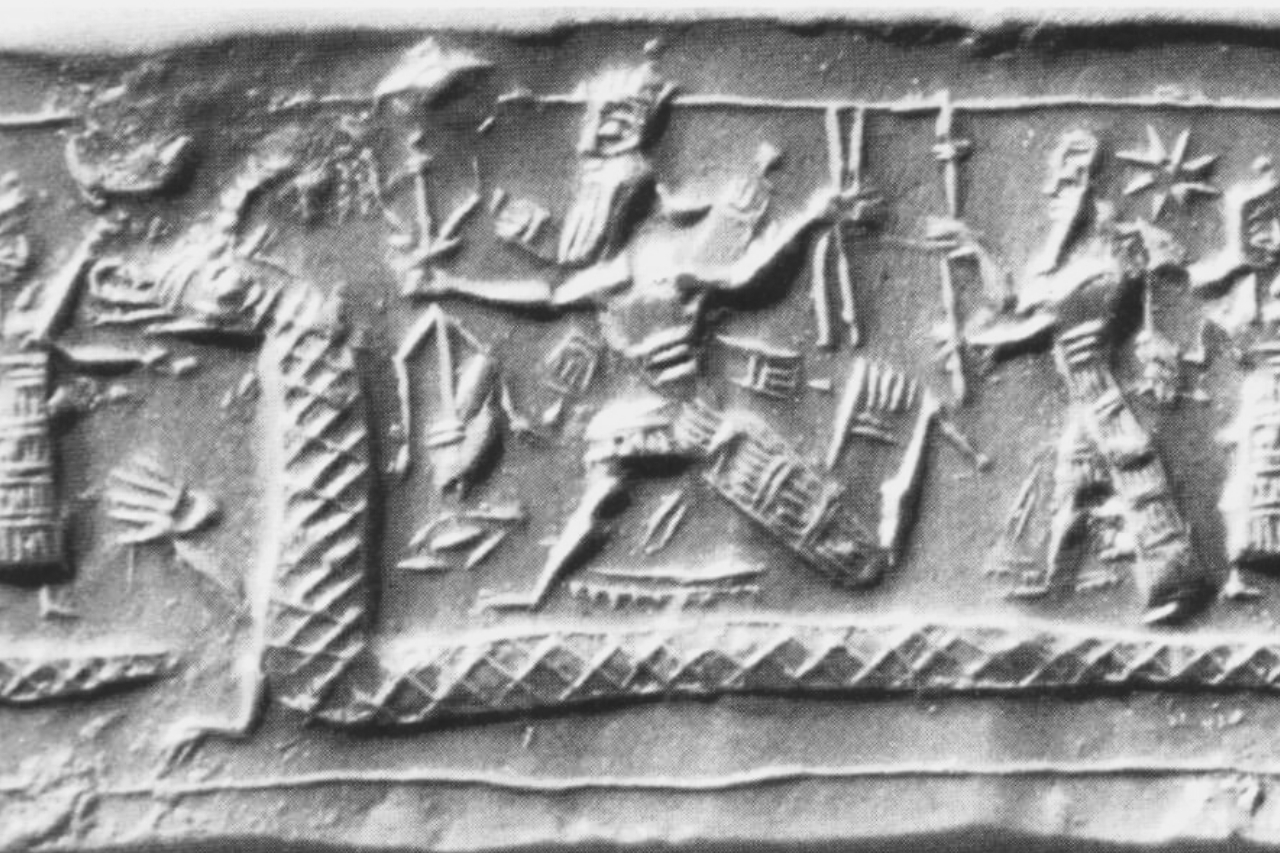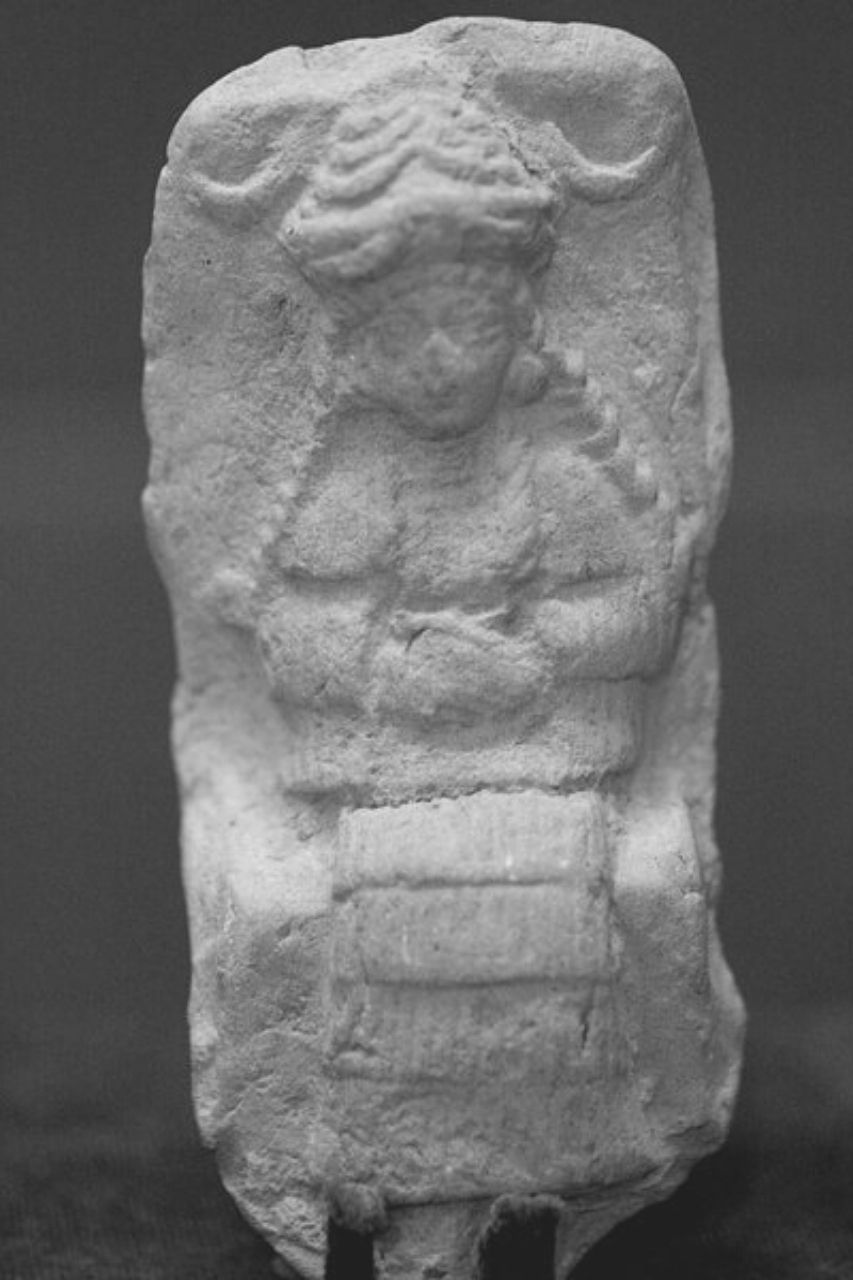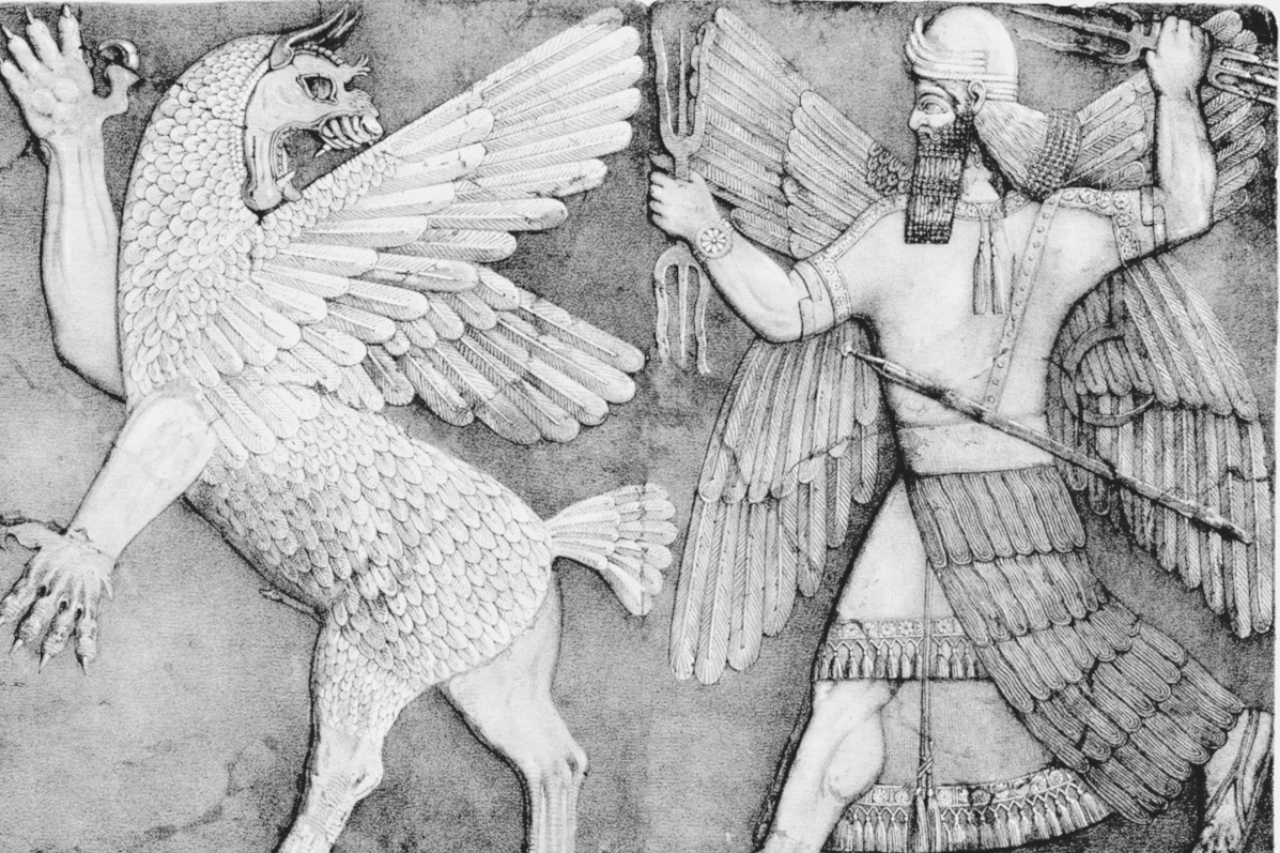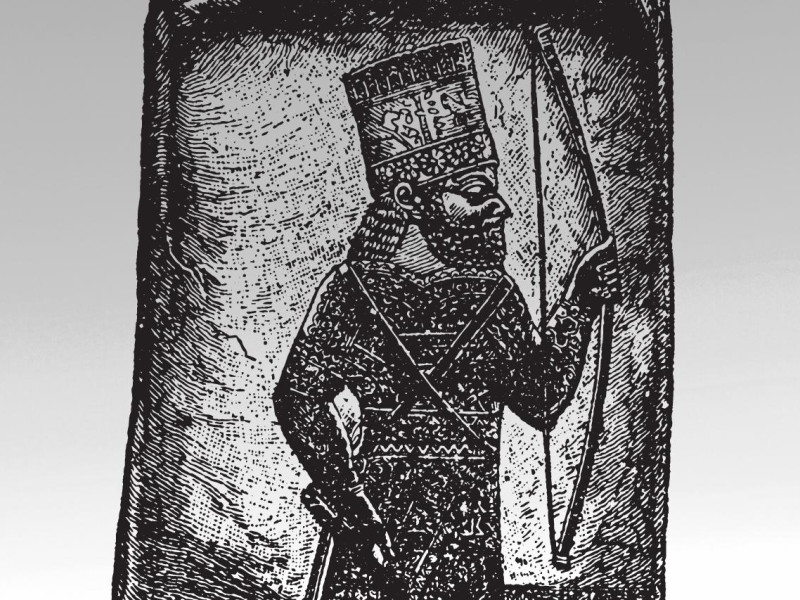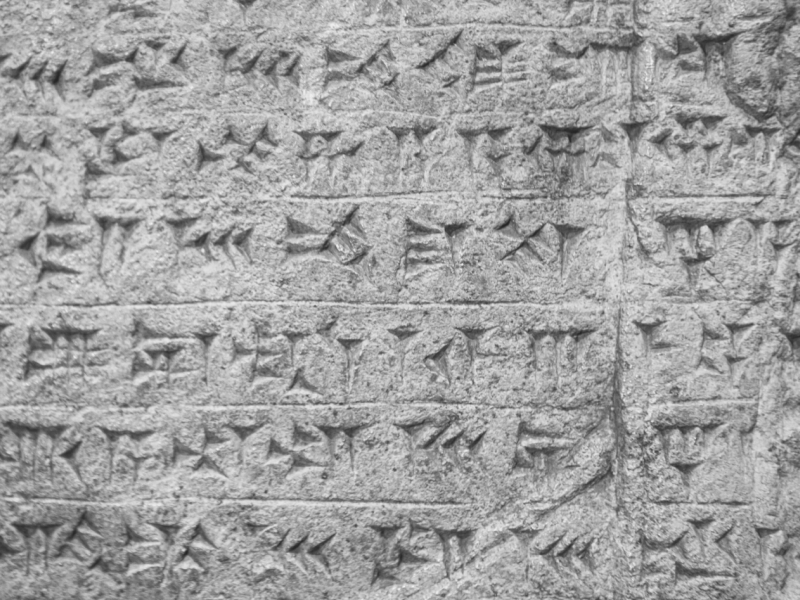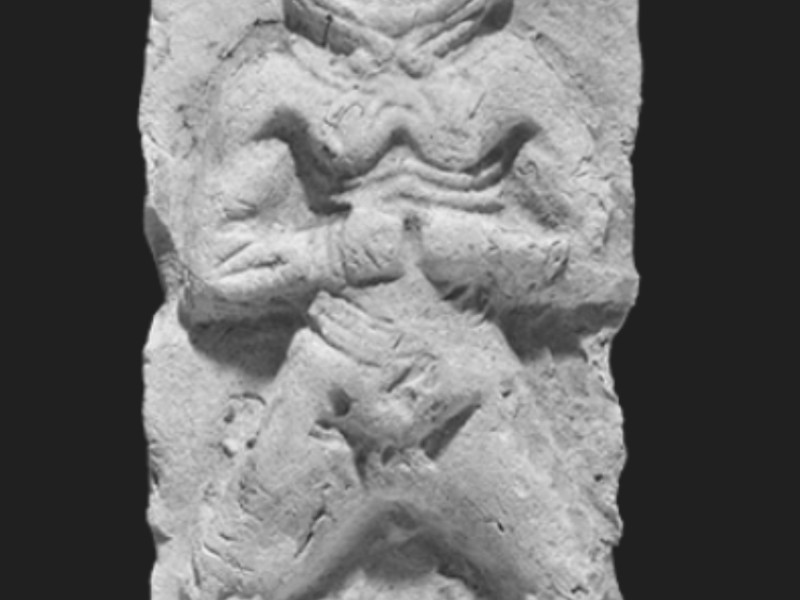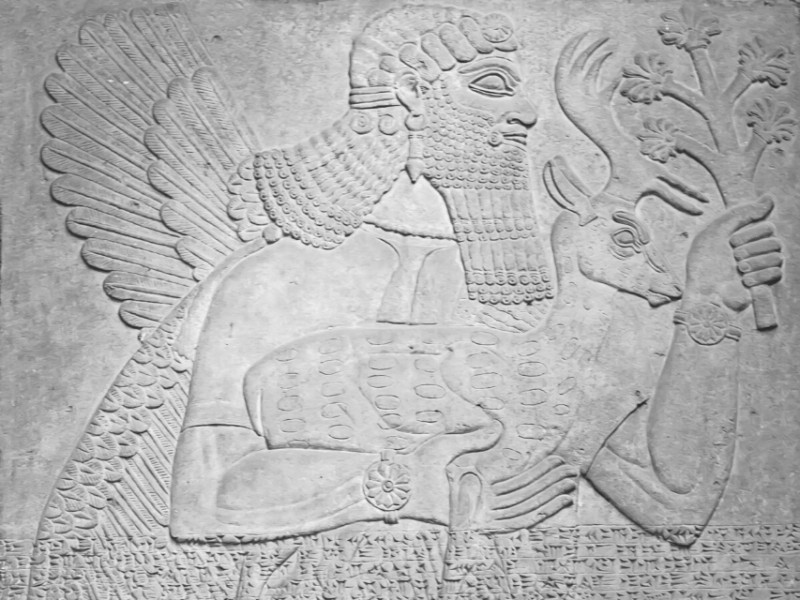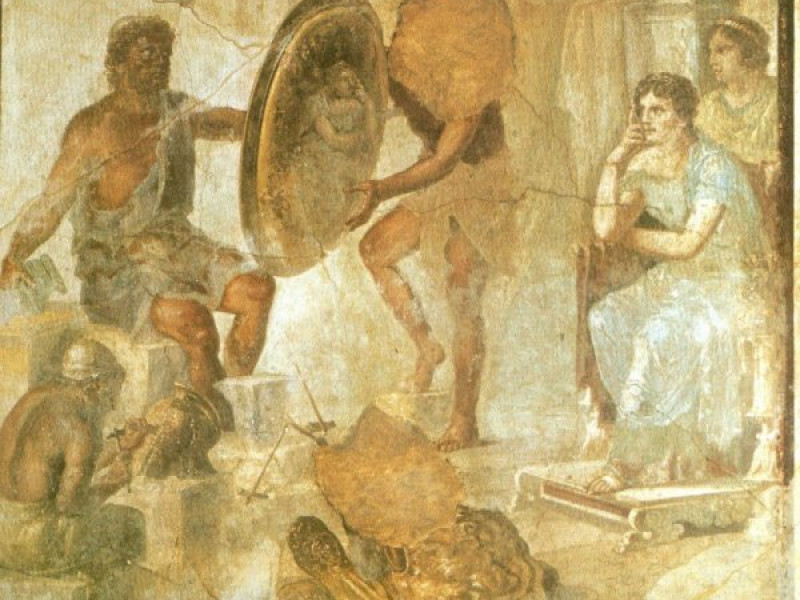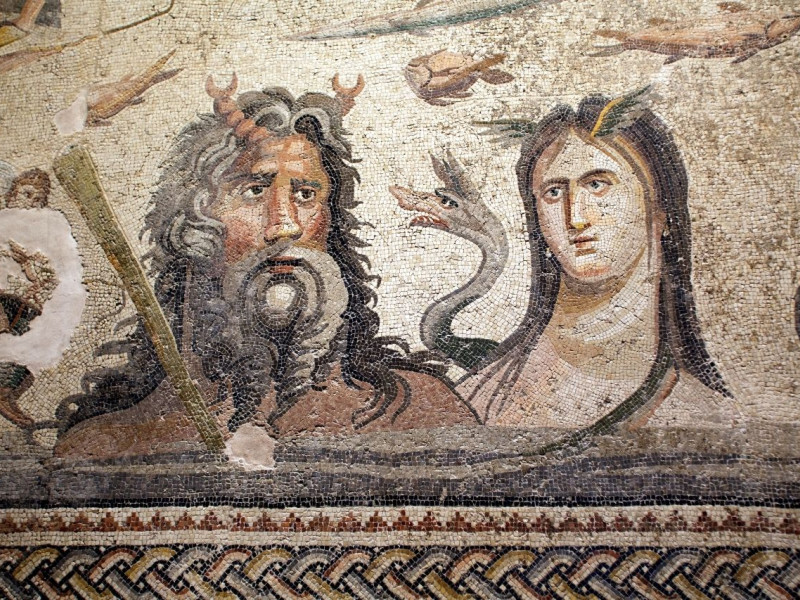Marduk vs Tiamat: A Passionate Story of Love and Revenge
Marduk vs Tiamat is an epic story of love, revenge, and sacrifice. This battle took place at the time of the ancient civilization of Mesopotamia and left its mark on history forever. Here we explain the interesting events that led to the legendary battle between the two gods and the ultimate conclusion.
Tiamat vs Marduk: The Backstory
The ancient civilizations are famous for polytheism. Countless gods and goddesses extended their dominion over a natural element or aspect of human life, and people worshipped them wholeheartedly. Among such civilizations is Babylon, in the territory of modern-day Iraq, which was once the hub of celestial deities.
Babylon was the capital of southern Mesopotamia. It is said that each city of Mesopotamia had its own god and goddess. People took pride in their deities being different. Each deity had its unique attribute and powers. To understand the history leading to the epic battle, we must first understand the different characters involved in it.
– Tiamat: The Goddess of Salt Water
The ancient religion of Babylon explains that Tiamat is the goddess of salt water. She is described as “The Glistening One”. She is most prominently referred to as the god of chaos and primordial creation. Tiamat Enuma Elish, in fact, was the name of the myth of creation in Babylonia.
– Apsu: The God of Fresh Water
Apsu is the Sumerian god of fresh water, having the religious fertilizing quality. It is believed that all-natural water bodies drew their water from Apsu.
– The Union of Tiamat and Apsu
Tiamat and Apsu formed a sacred bond of love and passion. Who knew this bond would be the death of them? They mixed in the Euphrates and Tigris, giving birth to the first world: Mesopotamia. The couple gave rise to many younger gods. The offspring of Tiamat and Apsu were active, cunning, and, as history revealed, did not obey their elders.
The Descendants of Tiamat and Apsu
With time, the new gods became irritating to Apsu. They did not let him sleep in peace and disobeyed him whenever they could. The descendants, for their part, had enough of Apsu’s criticism. They decided to get rid of him.
Apsu being the elder god, knew what his descendants were planning. Apsu conspired with his firstborn son, Mummu, and decided to slay his offspring before they could ever get to him. Tiamat, being the bearer of the deities, protested this notion. Apsu eventually came to his senses and agreed with her, but it was too late. The word had already gotten out.
His descendants learned the intentions of Apsu and asked for help from their sibling Enki, also known as Ea. He was the all-knowing god of water. Enki sent Apsu into a deep sleep and killed him. After killing his originator, Enki and his consort Damkina gave birth to their firstborn, Marduk, the god of creation.
The Revenge of Tiamat
After learning the fate of Apsu, his beloved, Tiamat isolated herself in grief. Even if she wanted to avenge her husband’s death, she could not bring herself to kill her own creatures. As time went by, Marduk grew up to be very powerful. The other deities became jealous and started poisoning Tiamat against Marduk.
They also viciously aggravated Tiamat against Enki, asking her to rise up and bring death to all those who ruined her and her marriage. After some resistance, she eventually listened to their words. Tiamat arose with full force to avenge her late husband.
She evoked all kinds of monsters and calamities: from fanged serpents to scorpion-men, hurricanes, she-monsters, and ferocious hounds, for a total of 11 types of horrifying creatures. Tiamat herself turned into a giant sea dragon.
She appointed her son, Kingu, as her general and gave him power over every other god. At the time, people believed that she had married Kingu before going into war. Kingu wore the royal raiments and the tablets of destiny.
It is important here to mention that the tablet of destiny is the most important relic in ancient mythology. These tablets are said to contain the secret of the creation of the earliest gods and the secret to their ultimate power.
The Appointment of Marduk
Enki heard word about the plans of Tiamat. He asked his counselors for advice on how to defeat Tiamat once and for all. Everyone pointed him towards Marduk. They knew he was powerful and brave. He could withstand anything and could leave everyone in the dust.
Eventually, Enki asked his son Marduk to defend his honor. In exchange, he promised him the supreme seat of King of the gods. Marduk agreed. He vowed to defend his father and his companions from Tiamat’s wrath.
The equipment of Marduk included a bow and arrows, his thunder club, his storm net and a lightning dagger. With these weapons, he set out to defeat Tiamat.
Tiamat vs Marduk: The Civil War of Gods
Tiamat and Marduk, along with their armies, finally met. The war raged on for days. Using their native powers and slaying anything that came in their way, they finally reached each other. Marduk trapped Tiamat, now a sea dragon, in a net. Marduk blew a strong wind through Tiamat, piercing her internal organs and her heart.
He stands triumphantly on the slain body of the mother of gods. This victory made Marduk the King of all existing gods and got him the title of Slayer of Tiamat.
Marduk: The King of Gods
If you ever wondered where and why did we come from, Mesopotamian mythology might have an answer. After the successful and tiresome battle, Marduk created man. He announced a new order, in which man would bear the burdens of life and the gods will live in eternal leisure.
When creating man, he needed the blood vessels of a god. He looked around and asked for suggestions. Which god should be slain to give this ultimate sacrifice? Everyone suggested Kingu, as he was the enemy in the battle between Marduk and Tiamat. Marduk cut open Kingu and used his flowing blood to give rise to man. After killing Kingu, Marduk took the Tablets of destiny off his chest.
He then proceeded to create the Zodiac, heavenly bodies, and the god of the Sun. With the remains of Tiamat’s body, Marduk created the sky, moon, mountains, earth, and winds. To commemorate his phenomenal victory, Marduk narrated the Enuma Elish.
Marduk Enuma Elish: The Story of Marduk’s Victory
Enuma Elish is the epic scripture that describes the events of Marduk vs Tiamat. In the ruined library of Ashurbanipal in Mosul, Iraq, a fragmentary copy was first discovered by modern scholars around 1875.
This copy is expected to be written in the 7th BC. It contains about a thousand lines, written on different clay tablets. These clay tablets are evidence of the Marduk mythology.
The Tiamat myth is carved into the clay. The last verses of Enuma Elish are words of advice for the coming generations of man. The writer presses the generations to read about his glory and take notes of Marduk’s bravery. He advises parents and teachers to educate their children to bring about happiness and prosperity.
Whatever knowledge we have of the ancient Mesopotamian deities comes through these tablets. These tablets tell the story of the rise of Marduk to ultimate power and how he used this power to give life to humankind.
Enuma Elish and the Bible
In the bible, many similar origin stories can be seen. Enuma Elish narrates that Marduk, the sixth generation god, created man and finally put the gods to rest. Likewise in the bible, Elohim (God) makes the man on the sixth day, and only then puts himself to rest.
Leviathan vs Yahweh
Another very important resemblance can be seen in the other parts of the bible, like Isaiah and Psalms. There, the sea monster Leviathan is slain by Yahweh. This can be related to Marduk slaying the sea dragon, Tiamat.
The story of Marduk vs Tiamat gives us a lot to think about. We may think that only our lives are full of tragic stories and troublesome events. Apparently, though, the gods have the same problems of jealousy and rivalry in their lives.
Conclusion
Here is the sum up to the epic battle between Marduk and Tiamat:
Tiamat was the goddess of Saltwater and Apsu was the god of groundwater.
Tiamat and Apsu combined their liquids to form generations of younger gods.
Enki, the god of water, killed Apsu to save himself.
The heartbroken Tiamat wanted to take revenge.
Marduk, the son of Enki, was appointed to fight Tiamat.
Tiamat turned into a sea dragon and set out to avenge her husband and kill Marduk.
However, Marduk killed Tiamat in the battle and was crowned as the God of gods.
Marduk created man and put the gods to rest.
The story of Leviathan vs Yahweh in the Bible could be a later version of the myth of Marduk vs Tiamat.
